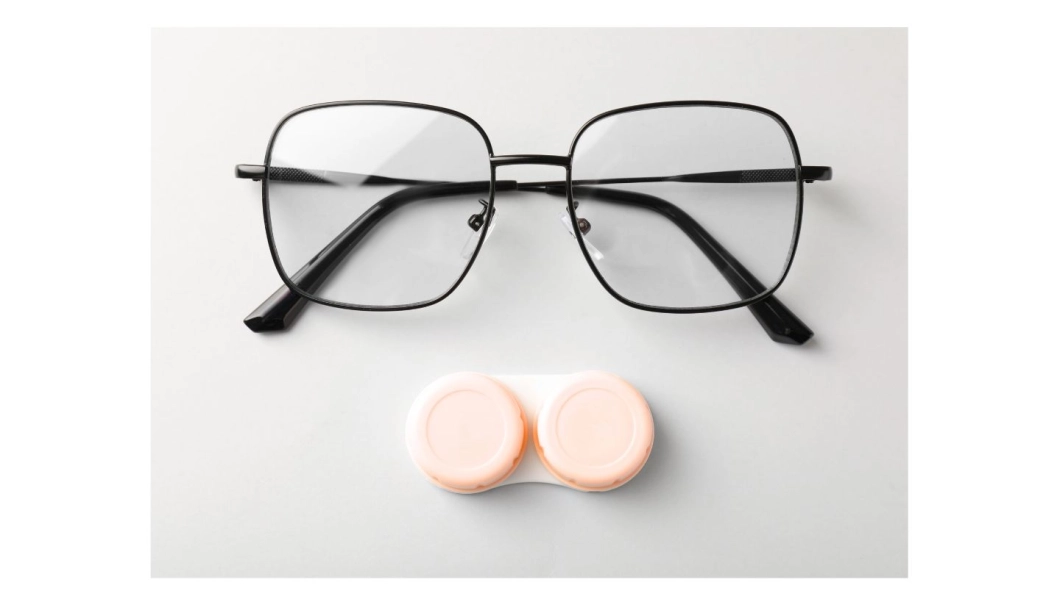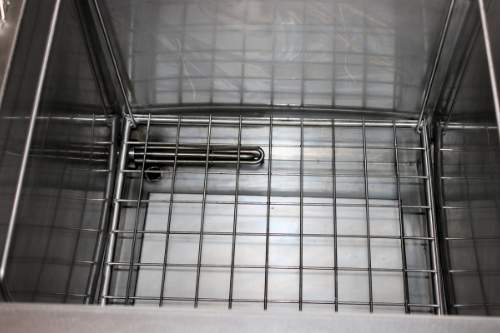Thu, 19 Jun 2025 16:59:00 +0200

Ultrasonic lens cleaning involves immersing lenses in a cleaning bath where high-frequency ultrasonic waves are generated. These waves produce thousands of microbubbles that collapse in a controlled manner (cavitation), dislodging adhering dirt particles without damaging the lens surface. The result is a thorough and uniform cleaning even in hard-to-reach areas such as bevels, threads, curvatures, or microcracks.
This process is widely used in opticians, ophthalmic clinics, research laboratories, optical instrument repair shops, and the lens manufacturing industry.
Ultrasonic Lens Cleaning Machines
Ultrasonic cleaning is suitable for a wide variety of lenses and optical components, including:
Using ultrasonic lens cleaning machines offers multiple benefits compared to conventional manual or chemical methods:
1. Deep cleaning without damaging the surface
Thanks to cavitation, there is no friction or direct contact with the lenses, preventing scratches or alterations to the material.
2. Elimination of microscopic contaminants
The ultrasonic system acts at the microscopic level, ensuring complete cleaning, even in areas where physical access is impossible.
3. Reduction in the use of chemicals
In most cases, a neutral, water-based detergent is sufficient. This minimizes the environmental impact and the risk of damaging sensitive lenses.
4. Time savings and increased productivity
The cleaning cycles are automatic and very fast, allowing multiple lenses to be cleaned simultaneously in just a few minutes.
5. Consistency and standardization
Each lens receives the same level of cleaning, without depending on the operator's manual skill.

Interior of ultrasonic tank for cleaning lenses and glasses. Special lens baskets are placed inside.
Ultrasonic technology has spread to multiple sectors related to optics:
At DCM Ultrasonic, we develop high-precision ultrasonic cleaning systems tailored to the optical sector. Our compact, benchtop equipment is ideal for applications involving delicate lenses and technical glass. It features:
Ultrasonic lens cleaning is the safest, most effective, and most modern alternative for keeping your lenses clean and free of impurities without compromising their optical quality. The deep cleaning provided by this technology guarantees clear vision, longer material durability, and a more hygienic and professional work environment.

News
Ultrasonic cleaning machines for lenses and glasses
19 June de 2025
Ultrasonic lens cleaning has become a key solution for maintaining the clarity, integrity, and performance of all types of optical lenses. This technology not only enables deep, contactless cleaning but also guarantees superior results to manual methods, especially on items as delicate as eyeglasses, optical crystals, microscope lenses, magnifying glasses, and other technical glass elements.Ultrasonic lens cleaning involves immersing lenses in a cleaning bath where high-frequency ultrasonic waves are generated. These waves produce thousands of microbubbles that collapse in a controlled manner (cavitation), dislodging adhering dirt particles without damaging the lens surface. The result is a thorough and uniform cleaning even in hard-to-reach areas such as bevels, threads, curvatures, or microcracks.
This process is widely used in opticians, ophthalmic clinics, research laboratories, optical instrument repair shops, and the lens manufacturing industry.
Ultrasonic Lens Cleaning Machines
What types of lenses can be cleaned with ultrasound?
Ultrasonic cleaning is suitable for a wide variety of lenses and optical components, including:
- Ophthalmic lenses (prescription glasses, sunglasses, etc.)
- Precision optical glass (for microscopes, cameras, projectors, etc.)
- Rigid or semi-rigid contact lenses
- Lenses for scientific and medical instruments
- Technical glass and industrial optical parts
- Light filters, viewfinders, and prisms for optical devices
Advantages of the Ultrasonic Lens Cleaning System
Using ultrasonic lens cleaning machines offers multiple benefits compared to conventional manual or chemical methods:1. Deep cleaning without damaging the surface
Thanks to cavitation, there is no friction or direct contact with the lenses, preventing scratches or alterations to the material.
2. Elimination of microscopic contaminants
The ultrasonic system acts at the microscopic level, ensuring complete cleaning, even in areas where physical access is impossible.
3. Reduction in the use of chemicals
In most cases, a neutral, water-based detergent is sufficient. This minimizes the environmental impact and the risk of damaging sensitive lenses.
4. Time savings and increased productivity
The cleaning cycles are automatic and very fast, allowing multiple lenses to be cleaned simultaneously in just a few minutes.
5. Consistency and standardization
Each lens receives the same level of cleaning, without depending on the operator's manual skill.

Interior of ultrasonic tank for cleaning lenses and glasses. Special lens baskets are placed inside.
Where is ultrasonic lens cleaning used?
Ultrasonic technology has spread to multiple sectors related to optics:
- Commercial opticians: cleaning customers' glasses and restoring aged lenses.
- Optical laboratories: lens maintenance during the manufacturing and calibration process.
- Ophthalmology clinics: cleaning surgical and diagnostic lenses.
- Precision and photography workshops: maintenance of camera lenses, projectors, and technical equipment.
- Research centers and universities: cleaning optical elements in highly demanding environments.
Our ultrasonic lens and eyeglass cleaning machines
At DCM Ultrasonic, we develop high-precision ultrasonic cleaning systems tailored to the optical sector. Our compact, benchtop equipment is ideal for applications involving delicate lenses and technical glass. It features:
- Optimized frequencies for gentle cleaning (35–45 kHz)
- Digital temperature and time control
- Stainless steel tanks
- Optional baskets for lenses and optical accessories
Ultrasonic lens cleaning is the safest, most effective, and most modern alternative for keeping your lenses clean and free of impurities without compromising their optical quality. The deep cleaning provided by this technology guarantees clear vision, longer material durability, and a more hygienic and professional work environment.
